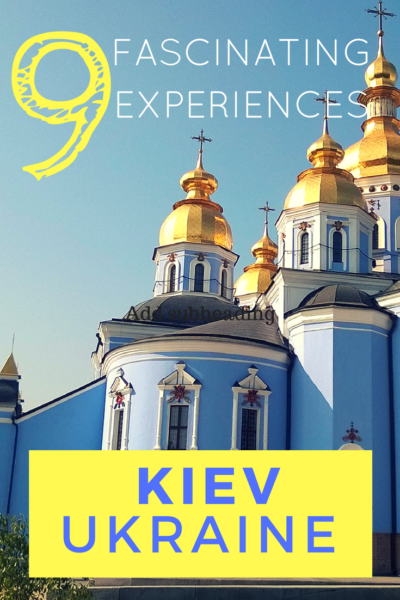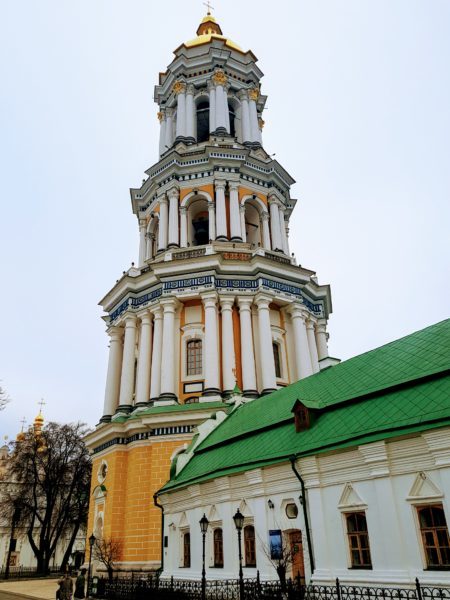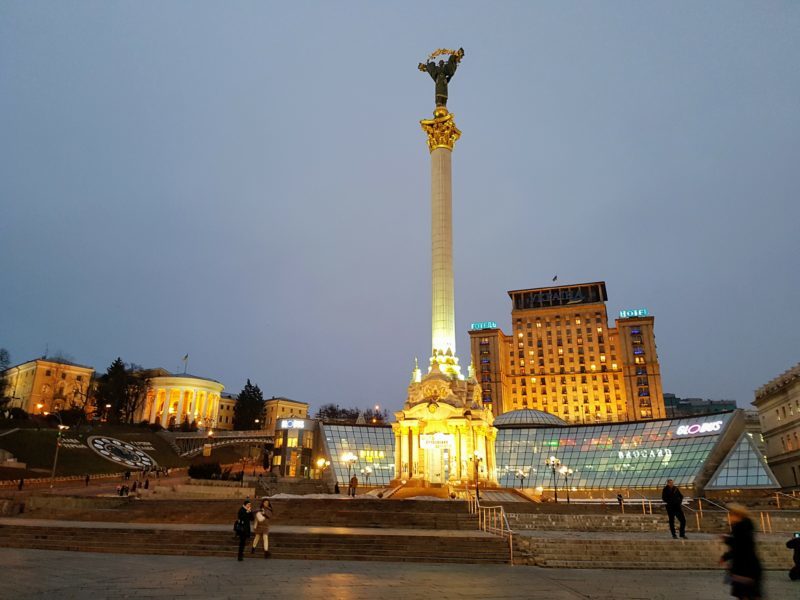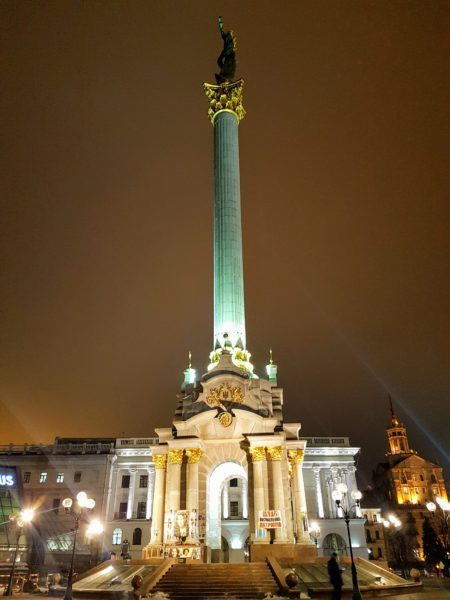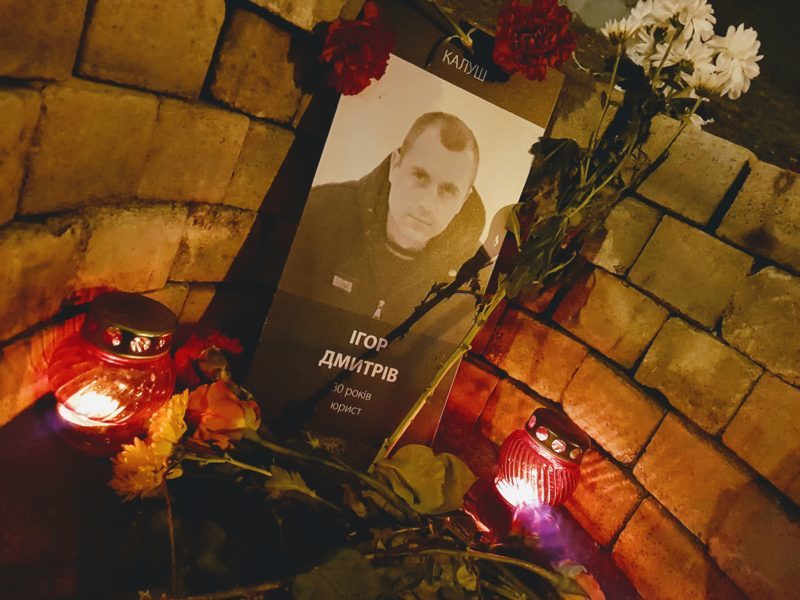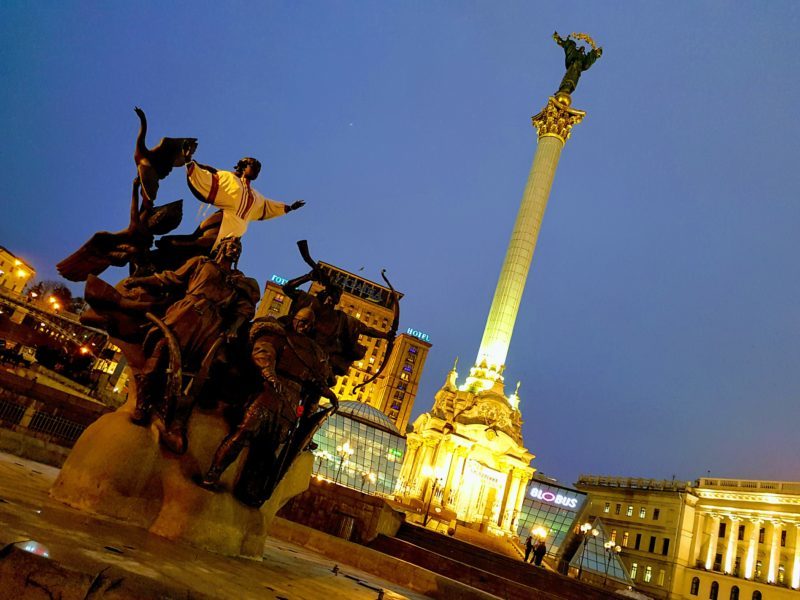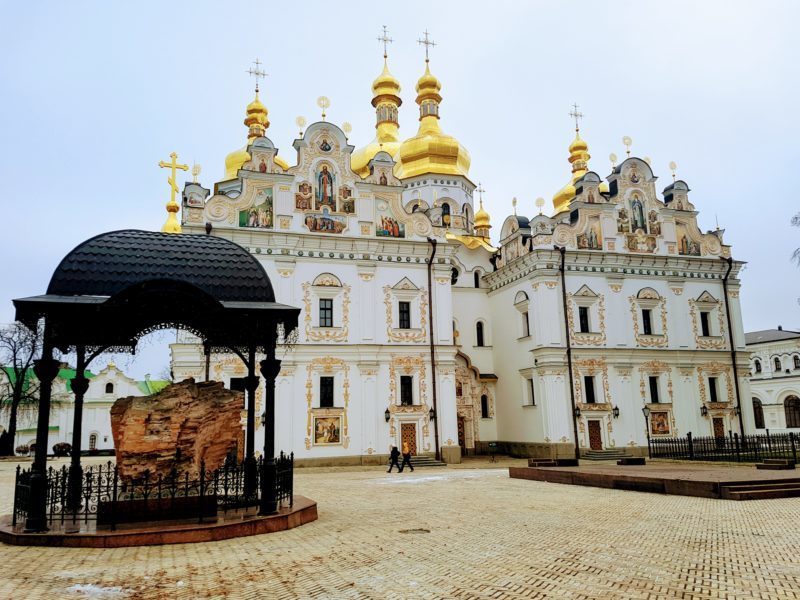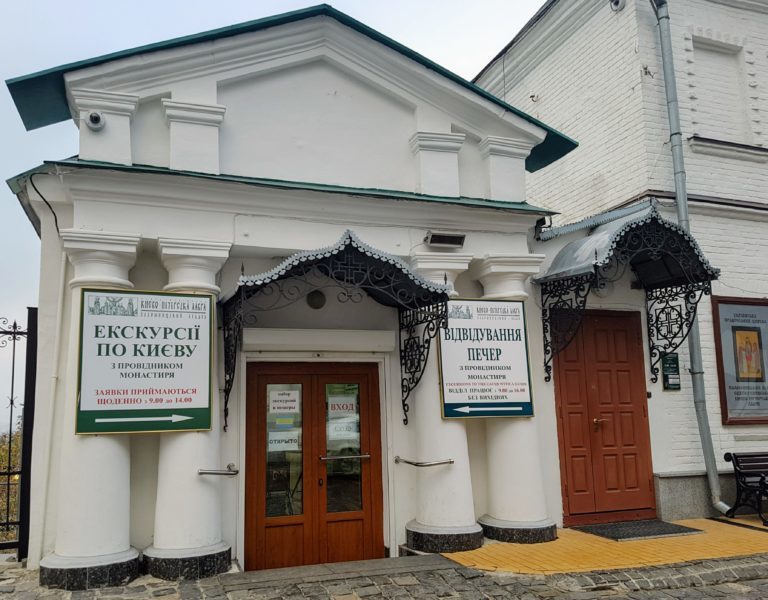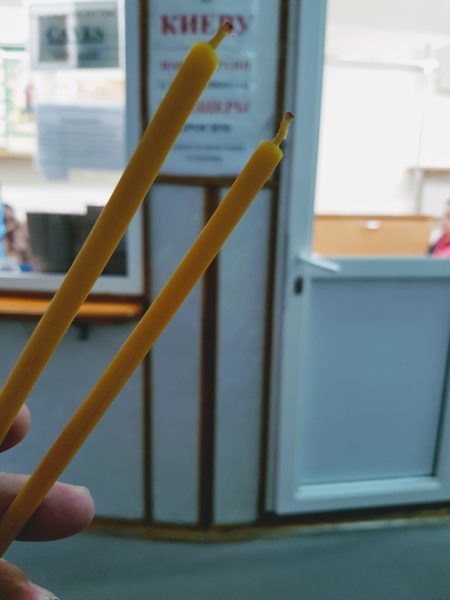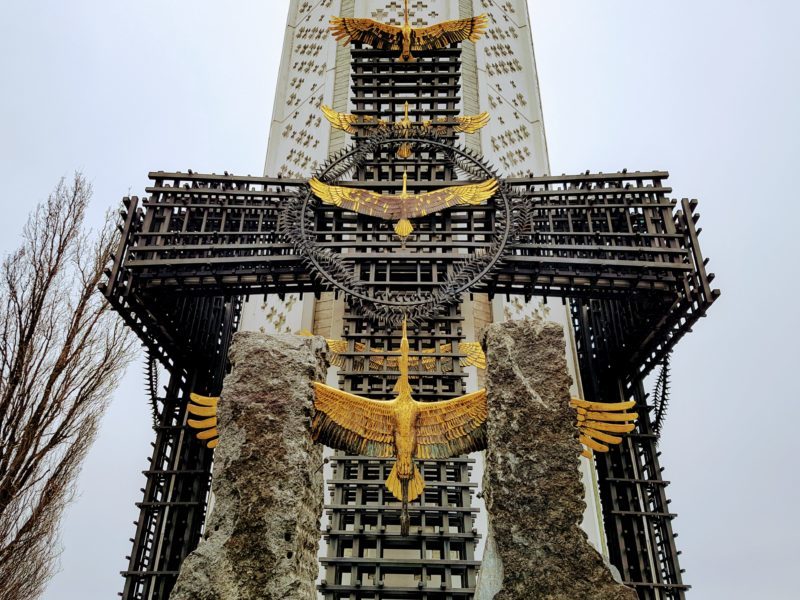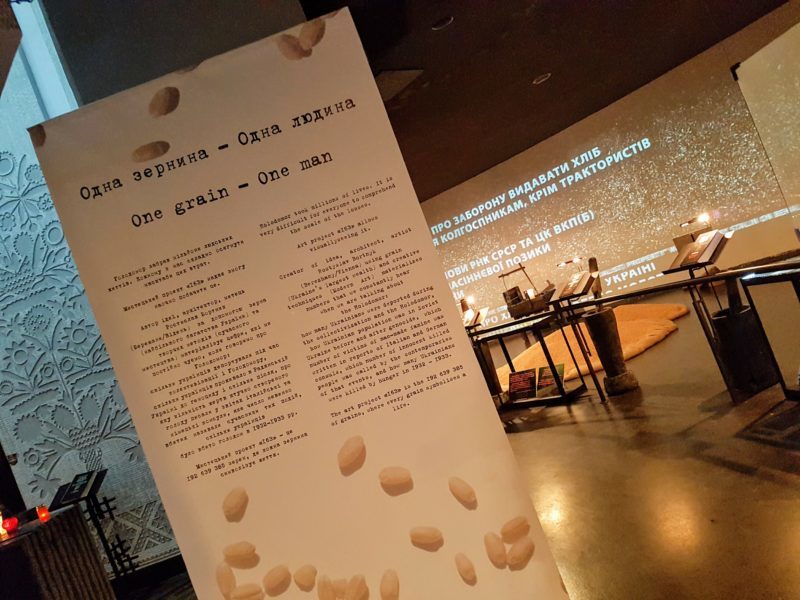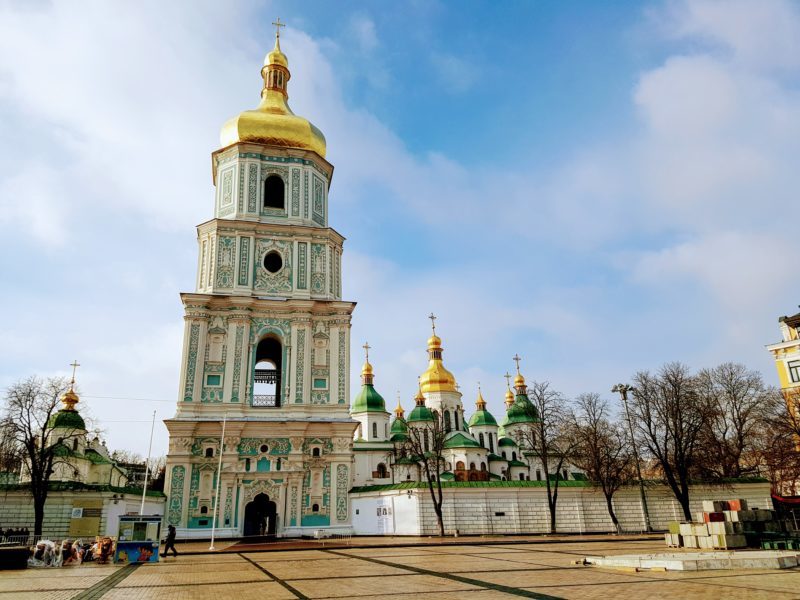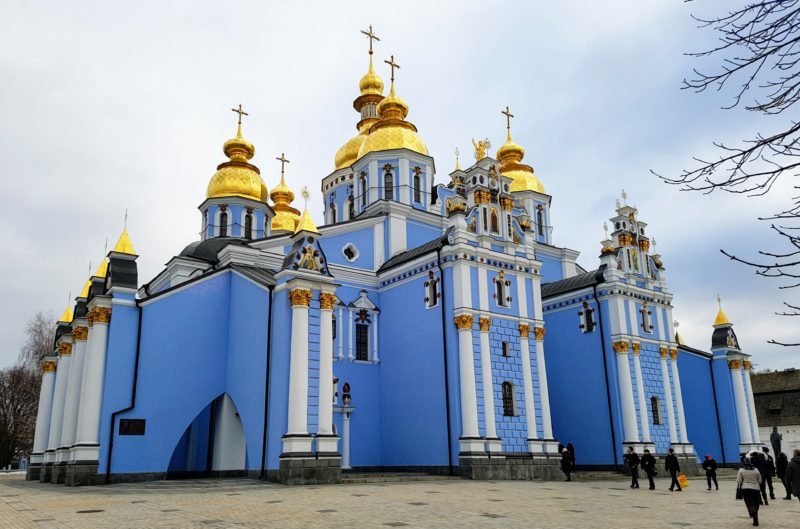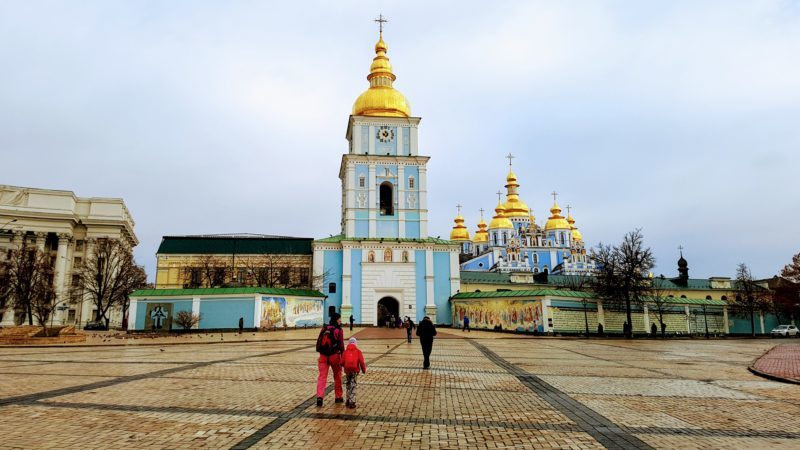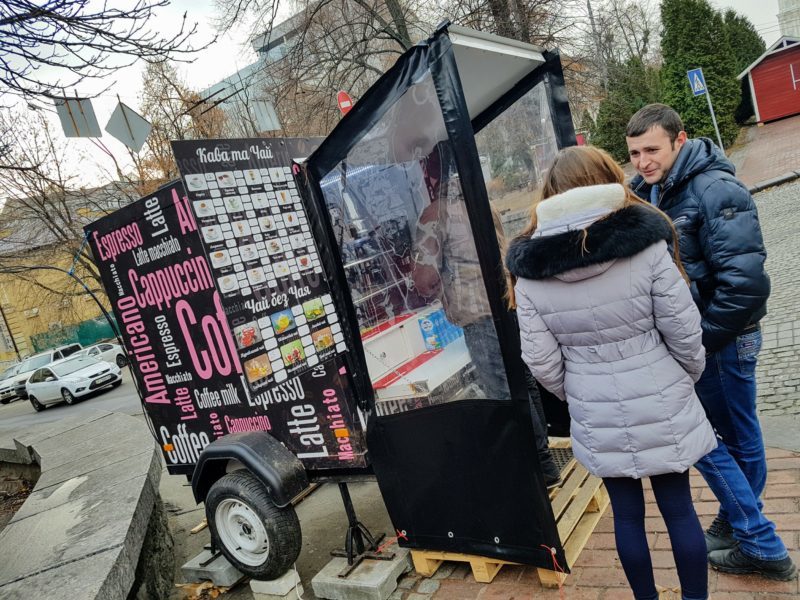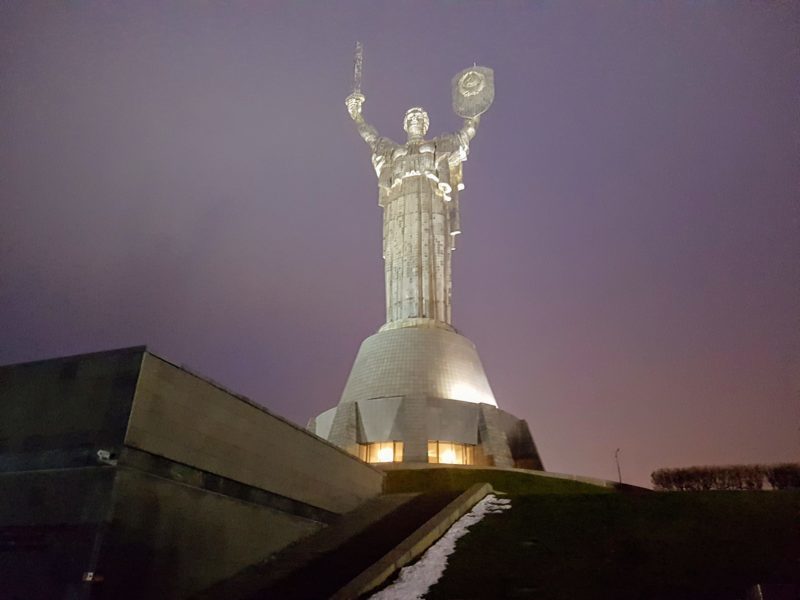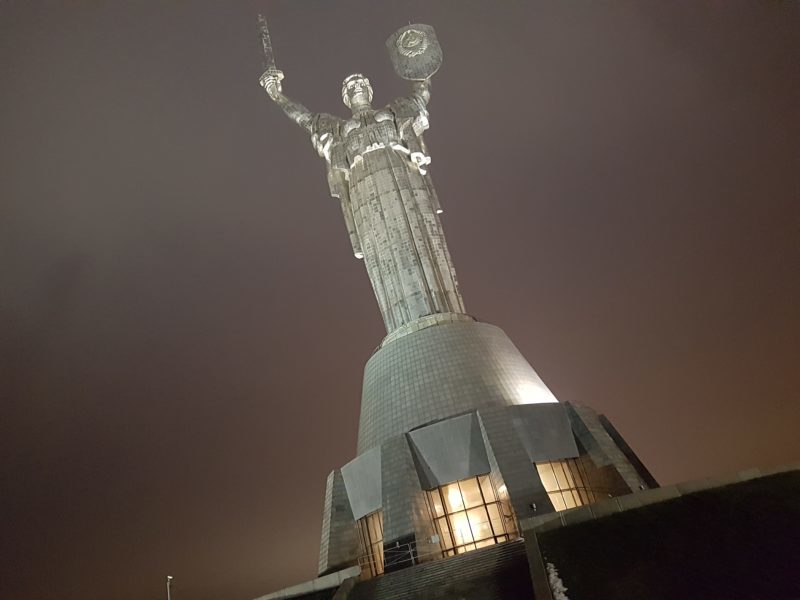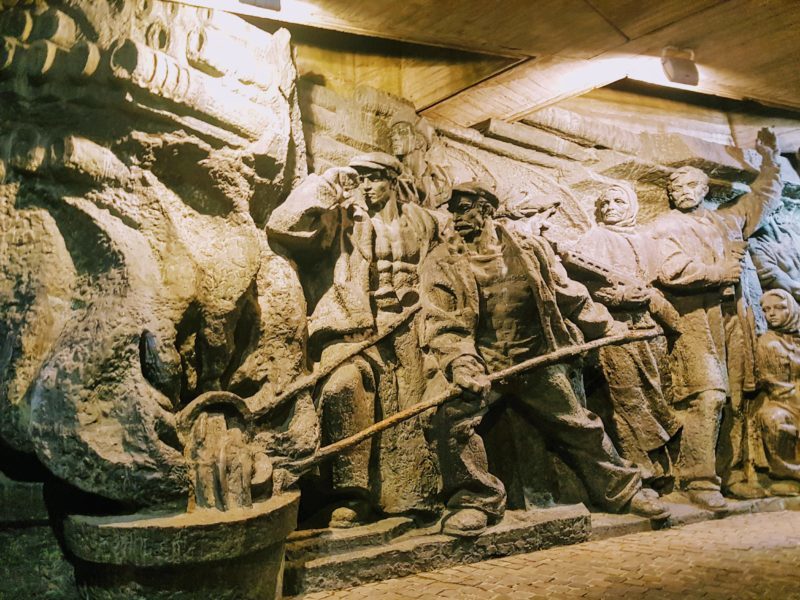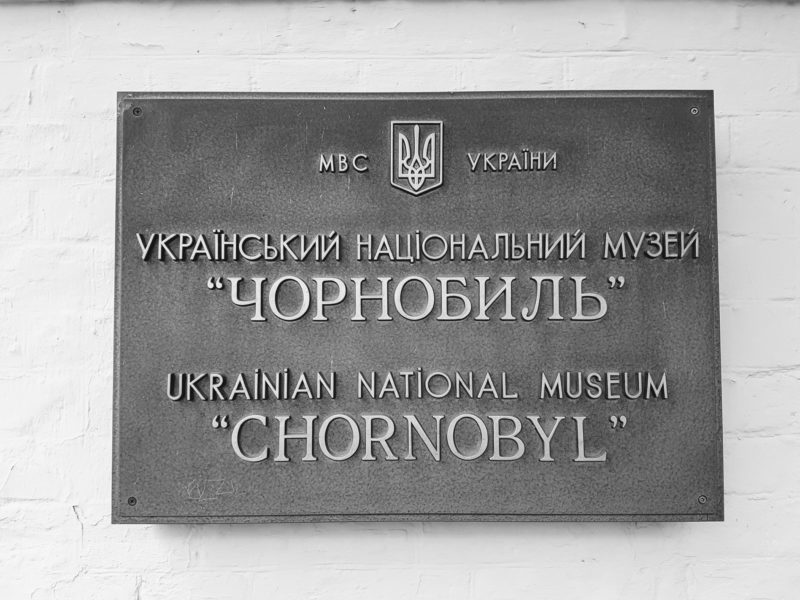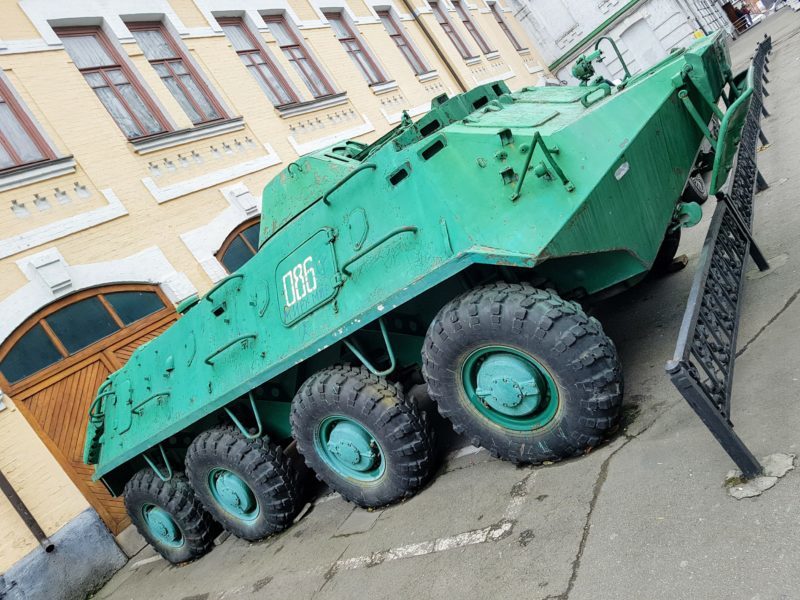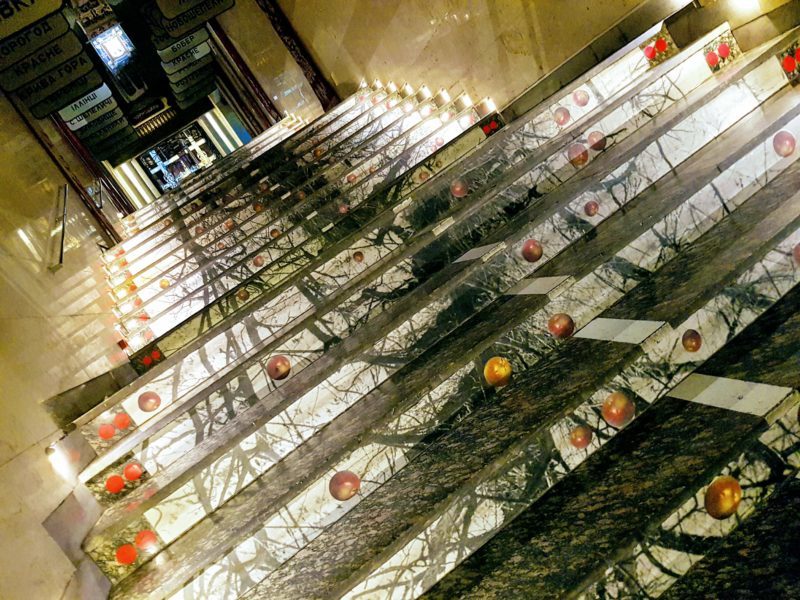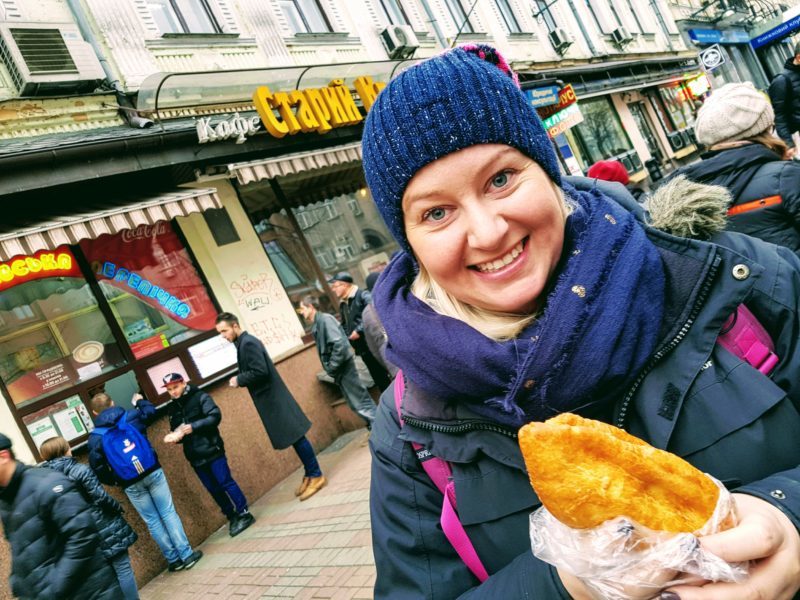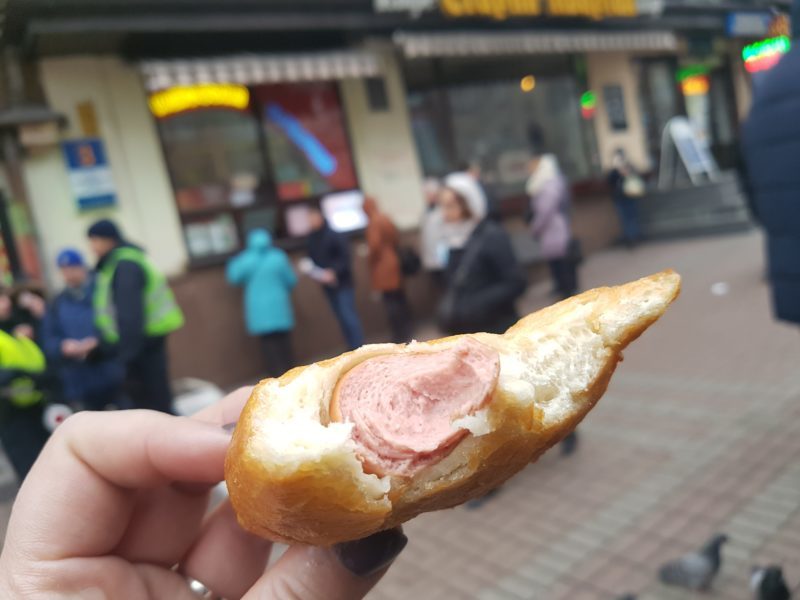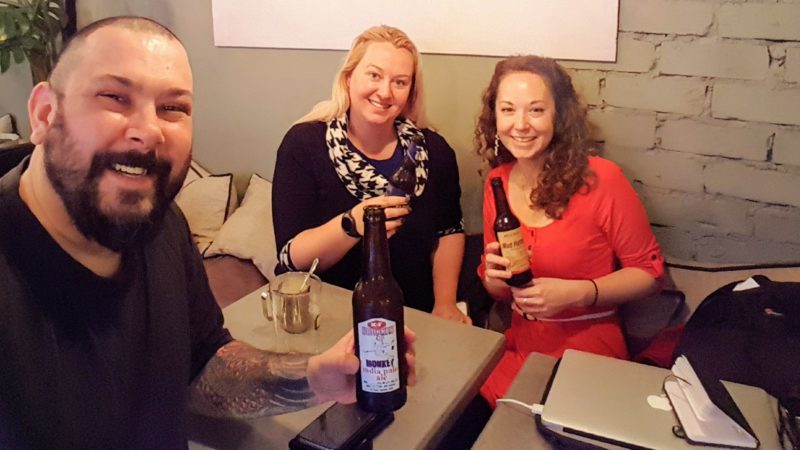Last updated: 29 July 2023
2022 Update
We are deeply saddened by what is happening across Ukraine at the moment and our hearts go out to everyone whom has been affected by this ongoing tragedy. Obviously, travel to Ukraine is not an option so please consult your local Government website for guidance and official charities on how to best donate.
This post was written in early 2017 following our visit in late 2016, we hope our Ukraine posts continue to provide some historical context about what travel to Ukraine was once like.
Kyiv, the capital city of Ukraine, is a vibrant city which offers many unique experiences to its increasing yearly visitors. From exploring the 1000 years of complex ancient and modern history, to the wonderful (and delicious) local cuisines, and not to mention its unique personality.
Why Go?
I think the first reaction from most people when I said we were going to Kyiv was “Um ok….” and I completely get that. Kyiv doesn’t have the same international allure of Paris or Rome, and to be honest, that was one of the reasons we wanted to go. We wanted to go somewhere a little different, a little less crowded, and somewhere that would give us the opportunity to discover a place we knew little about.
The decision to visit Kyiv was one of the best decisions we ever made because we absolutely loved Ukraine’s capital city – from learning about its complicated history, to the remaining Soviet-era architecture, to its youthful popular bar and coffee scene, and it’s delicious food. Kyiv has something for everyone and should be on your To Travel List!
So without further ado, here’s 9 Fascinating Things to Experience in Kyiv;
No 1 – Visit Independence Square
A visit to Independence Square (Maidan Nezalezhnosti) is an absolute must when you’re visiting Kyiv, it was the scene of the 2013 Euromaidan protests which brought Kyiv into the international spotlight. You probably recall the extreme images & videos shared across social media of barricaded protesters being attacked by riot police grabbing headlines the world over.
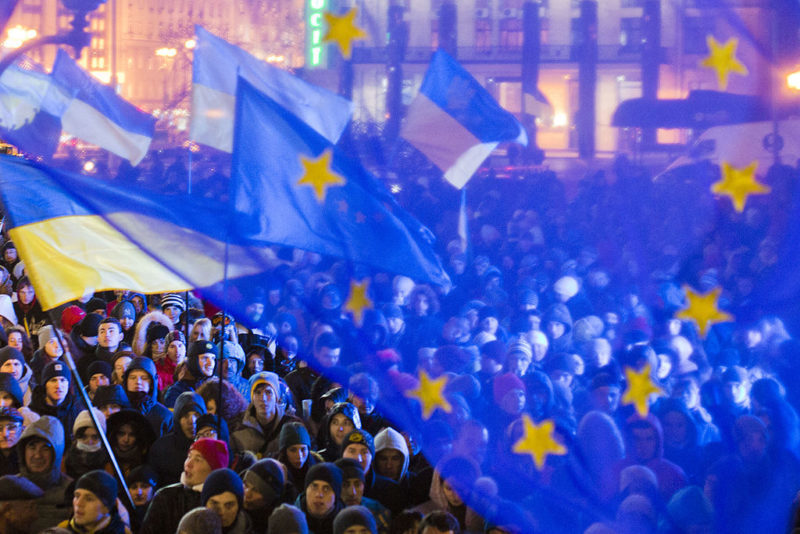
The history of the Euromaidan protests is complex and cannot be accurately described in a single paragraph so I recommend learning more about its complicated history here. However, one of the key factors in the birth of the protests was as a direct result of when the (then) President Viktor Yanukovych’s government suspended preparations to join the European Union on 21 November 2013.
The decision to step away from joining the European Union led to thousands of demonstrators descending upon Independence Square to voice their resentment and anger. Over the next 3 months, Independence Square was the site of devastating violence which caused countless injuries and the deaths of 130 identified protesters and 18 police officers.
We weren’t sure what to expect during our visit to Independence Square, especially given that it was only a few days after the 3 year anniversary of the protests. We expected a heavy police presence, crowd control barriers, and perhaps even protesters. What awaited us was even more surprising.
We almost had the entire place to ourselves. There was a single police car parked on the corner and we could see a couple of tourists taking photos of the Independence Monument but that was it. Well, aside from two costumed characters who approached everyone to take photos with them.
The most famous monument in Independence Square, and arguably the most well-known in all of Kyiv, is the Independence Monument. The 61m (200ft) tall victory monument was erected in 2001, the 10th anniversary of Ukraine’s independence. At the top of the monument is a 20 tonne statue of Berehynia, the hearth mother, protector of Kyiv, holding a guelder-rose branch (a symbol of Ukraine).
It was honestly surreal to stand at the base of the Independence Monument during our visit recall all the images & videos we watched online from the protests. It was a little difficult to comprehend that the peaceful place where were were standing was the same place where many protesters lost their lives.
However, those who lost their lives in the Euromaidan protests are still remembered openly by the people of the city. From the Independence Monument, take a walk along Heroyiv Nebesnoyi Sotni Alley and pay your respects to the candlelight memorials of those who died in 2013/2014. It was sombre, quiet, and well worth visiting.
As you return to Independence Square, make sure you check out the Monument of Kyiv’s Founders fountain. This fountain was one of my favourite pieces of Ukrainian architecture because it was so beautifully detailed that the sculptures of the brothers Kyi, Schek, & Hori, and their sister Lybid, almost appeared lifelike.
The Essentials
Where: Independence Square is located on Khreschatyk St
Cost: Free
Opening Hours: 24/7
Don’t miss: Walking up to the Opera House to take some photos overlooking the Independence Monument
No 2 – Kyiv Pechersk Lavra
The Kyiv Pechersk Lavra is an area in central Kyiv which has become an important Christian site owing to its many cathedrals and churches. It’s easy to see why Kyiv Pechersk Lavra is one of the most popular places to Kyiv, the place is huge! There is so much to explore that you definitely need to add in some extra time to see it all.
You get the impression that the Lavra is pretty big when you arrive at the ticket office and spend a good 5 minutes trying to determine what you want to see inside the complex. As with most museums in Kyiv, there will be a photography licence to purchase if you wish to take photos. There are multiple buildings; including the famous The Great Bell Tower, Church of the Assumption, Museum of Micro-miniatures, Museum of Historical Treasures, and many others.
See also: Food, Cocktails, & Coffee in Kyiv
One thing you need to know that is the Lavra isn’t just about exploring a series of beautifully ornate cathedrals, the Lavra is in fact, the site of the 1000 year old CAVE monastery! And to make it even more astounding, it’s a working monastery that is still in operation today.
The Monastery of the Caves was founded in 1051, all dug by hand between the 11th and 15th century, and is listed on the UNESCO world heritage list. You purchase your tickets for the caves at the back of the Lavra so it makes sense to explore the other buildings first before heading to the caves. The only way to explore the caves is with a guide so if you visit during summer then expect to share your experience with others.
Roma and I paid the 300 UAH (£9) for the next cave visit (unfortunately no photos allowed) and were lucky enough to get a private tour, one of the benefits of travelling during the colder months and our 60 min exploration of the caves was excellent. You will be given a candle to light your way during the tour.
One quick tip for the ladies, upon entry to the caves you will be asked to wear a skirt. Don’t worry if you aren’t wearing one because at the entry point there will be a basket of loan skirts which you can wear around your existing clothing. Roma was wearing jeans and was able to simply wrap the green skirt around her waist and there was no issue. Also, it’s advisable to bring your own scarf to cover your head during the visit as well.
Our guide wasn’t as enthusiastic as we would have liked but it made no difference because the history of the caves and the details of the dead monks on display made up for it.
Did I just say dead monks? Yup, I sure did. As you walk through the caves you will pass by numerous glass cases with the remains of the monks who dedicated their lives to this monastery. You will pass by pilgrims who pray and kiss the glass displays before moving on to the next chamber.
Would we recommend a visit to the caves? Without a doubt.
The Essentials
Where: Lavrska St, 15, Kyiv
Cost: Variable. We paid 60 UAH (£2) each, 200 UAH (£6) for photography permit, & 300 UAH (£9) for caves
Opening Hours: 6am – 8pm
Don’t miss: The baby-sized coffins which contained the remains of baby who was canonised after dying at the hands of a Pagan who found Christianity. Creepy.
No 3 – Holodomor Museum
Did you know that Ukraine was the victim of a horrific man-made famine orchestrated between 1932 and 1933 which systematically killed over 7 million people?
A visit to the Holodomor Museum in Kyiv was one of the most eye-opening experiences of our entire trip and honestly left us speechless with what we learnt. The museum explains the history of the 1932/1933 genocidal famine engineered by the Soviet Union to wipe out Ukraine.
The museum is located beneath the Ukrainian Genocide Memorial. It contains various exhibits, interactive displays (also in English), and informative videos to ensure that all visitors can begin to comprehend the enormity of the Holodomor.
It is worth noting that the Holodomor has officially been recognised as an act of genocide by Ukraine since 2006 and the memorial day is the fourth Saturday every November. The anniversary coincided with our visit to Kyiv so we were able to observe many people paying their respects throughout the city.
The Essentials
Where: Lavrska St, 3, Kyiv
Cost: 16 UAH (£0.60) 5 UAH (£0.15) photography permit
Opening Hours: 10:00 – 18:00 (closed on Tuesdays)
Don’t miss: The haunting statue of a young girl at the entrance to the museum
No 4 – St Sophia’s Cathedral
No visit to Kyiv is complete without a visit to St Sophia’s Cathedral, one of the symbol of Kyiv.
St Sophia’s Church is the oldest building in Kyiv and was first created in the 11th century which makes it over 1000 years old and, along with the Monastery of the Caves, is a UNESCO world heritage site.
The name of the cathedral comes from the famous St Sophia’s Church in Constantinople, Turkey. Incidentally, that is also where Bulgaria’s capital city obtained its name. A visit to St Sophia’s Cathedral is definitely worth visiting, not only is it remarkable to admire but it allows you to connect with a thousand years of history.
The Essentials
Where: Volodymyrska St, 24, Kyiv
Cost: 50 UAH (£1.50)
Opening Hours: 10:00 – 18:00, Wed 10:00 – 17:00, Closed Thurs
No 5 – St Michael’s Gold-Domed Monastery
Located only a short walk from the impressive St Sophia’s Cathedral is St Michael’s Gold-Domed Monastery.
When you first arrive at the monastery and stand outside the front, you’re going to be impressed by just how amazing it looks. I remember thinking it almost looks brand new and there’s a reason for that, it pretty much is.
St Michael’s Monastery was originally constructed in the Middle Ages by Sviatopolk II Iziaslavych but was completely destroyed by the Soviet Union during their occupation of Ukraine. The cathedral was reconstructed following Ukraine’s independence in 1991 and was completed in 1999.
Roma and I spent a good deal of time admiring the cathedral from the outside, it’s rare to find a relatively newly constructed building which has the appearance of something from the Middle Ages. When we decided to explore the interior of the cathedral there was a service taking place so we were unable to take photos.
One interesting point is that St Michael’s Cathedral was the location where many of the injured protesters took refuge and sanctuary during the 2013 Euromaidan demonstrations.
The Essentials
Where: Triokhsviatytelska St, 8, Kyiv
Cost: Free
Opening Hours: 08:00 – 19:00
Don’t miss: Just take a moment and admire the cathedral, it’s honestly amazing
No 6 – Coffee Vendors
If you’re a regular reader of Roaming Required then you know that both we LOVE our coffee. In fact, no day gets started or travel post gets finished without the help of a caffeine-infused beverage, which is yet another reason why we loved our visit to Kyiv
One of our favourite places to stop by in the morning before heading out for a day of exploring was at a pop-up sidewalk coffee vendor. The good news is that they were on every street corner so plenty of places to get a pick-me-up.
Some ran their coffee shops out of the boot of their cars while others had little pop-up carts.
The prices were reasonable, 11 UAH (£0.32) for black coffee and 12 (£0.35) for flat white, and the quality was good. It was even more appreciated when the outside weather dropped to -2 during our stay.
No 7 – Motherland Monument
If you’re a fan of history, and yes we all know I am, then you’re going to love a visit to the Motherland Monument. It’s a throwback to the Soviet-era which remains irrelevant in today’s world but there is something oddly appealing about this historical relic.
The statue stands 62 metres (203 ft) tall and is made out of stainless steel and stands atop the Museum of the History of Ukraine in World War II. The statue holds two symbols in her hands, a sword measuring 16m (52ft) and a shield with the hammer and sickle of the Soviet Union.
When Roma and I visited, we ended up taking the long way around to reach the monument when the easiest option was to walk directly from the Lavra. Make sure you do this during your visit, it will save you plenty of time.
As you approach the Motherland Monument you will pass by a series of Soviet-era reliefs depicting the struggle of the Soviets. The reliefs themselves were very impressive, the amount of detail was worth stopping and photographing.
One very cool thing that you have to do during your visit to the Motherland Monument is to take the elevator to the top of the monument and a view out over Kyiv. There are two observation decks, one at 36 metres and the other one at 91 metres (located in the eyes of the monument). Unfortunately, Roma and I didn’t get a chance to take the elevator up because when we arrived 4:40pm we had already missed the last elevator of the day (despite the cut-off being 5pm…)
The Essentials
Where: The monument is located atop the World War II museum
Cost: 200 UAH (£6) to take the elevator to the top platform
Opening Hours: 10:00 – 17:00 (closed Monday)
Don’t miss: the last elevator! Ensure you turn up on time to get to the top
No 8 – Chernobyl Museum
On 26 April 1986, the No 4 reactor at the Chernobyl Nuclear Power Plant exploded during an overnight safety check which unleashed radioactive material into the atmosphere which had a devastating effect on the Soviet Ukraine and impacted most of Europe.
The explosion at the Chernobyl Nuclear Power Plant has been recognised as the worst nuclear accident in history and despite it occurring 30 years ago, its effects can still be felt today.
During your trip to Kyiv, a visit to the the Chernobyl Museum is a definite must because it’s at the museum where you’ll learn about the power plant’s history, the cause of the accident, the fallout, the clean up effort, and the ongoing impact. It’s an emotional experience but one you should definitely make the time for.
The museum is located down a small unassuming street in the middle of downtown Kyiv, if it wasn’t for the historic emergency services vehicles displayed on the footpath then it would be entirely possible to walk right past the entrance.
The museum opened on 26 April 1992, six years after the disaster, and has been educating thousands of visitors every day since. The motto of the museum can be seen upon entering; Est dolendi modus, non est timendi (There is a limit of sadness, anxiety has no limits).
We found the Chernobyl Museum to be one of the best we’ve visited and ended up spending close to the 3 hours inside.
We read every exhibition, detailed signs, historical document, and watched every video on display. By the end of the visit, we felt that we had a much better understanding of the events leading up to the Chernobyl disaster, the incredibly brave efforts of the first responders, and the ongoing effects impacting the present day.
The Essentials
Where: Khoryva Lane, Kyiv
Cost: 10 UAH/ 5 UAH (£0.30/0.15) (adult/student), 50 UAH (£1.50) + 100 UAH (£3) deposit (audio guides), and 30 UAH (£1) (camera permits)
Opening Hours: 10:00 – 18:00 (closed Sunday)
Don’t miss: Ensure you watch the Chernobyl disaster diorama, it’s very comprehensive and helps contextualise all the information covered in the museum.
No 9. Kyivska Perepichka
One of the best things about travelling to new countries and cities is the ability to sample new foods and when you’re visiting Kyiv, you have to pay a visit to Kyivska Perepichka which is pretty much a foodie institution.
According to all the guide books this is the place to go and get a uniquely Ukrainian sausage wrapped in a bun. So a hot dog then? We headed towards Teatralna metro station and found Kyivska Perepichka on the main street, easy to spot when there was a line of 20 customers out the front!
We joined the back of the line expecting a long wait but it turned out everyone in front of us were locals and within 60 seconds we were at the front window ready to be served. I held out two fingers and said two please and handed over 10 UAH and that was it. We were given two hot rolls in a small plastic bag and stepped to the side.
Was it like a hot dog? Was it good? It was interesting….it tasted like a sausage wrapped in a donut. It was both intriguing and kind of bland at the same time. It was a different experience and one we couldn’t determine if we liked it or not. However it was warm and welcome when we were cold and hungry.
Would I have another? Yes, yes I would.
The Essentials
Where: 3, Bohdana Khmel’nyts’koho St
Cost: 5 UAH (£0.15) each
Don’t miss: Pay attention to the line. It’s going to move fast!
Final Thoughts
A visit to Kyiv was one of the highlights of our trip to Ukraine and I would recommend it to everyone. Kyiv may be one of those cities which the majority of people may choose to bypass when selecting their next holiday destination but it won’t stay like that for long. Word will eventually get out about how much history and culture there is to explore, delicious local foods to enjoy, and how Kyiv has its own unique style which should experienced in person.
A massive shout out to Amy Butler (@wayfarersbook), an American expat who is currently living in Kyiv.
Amy wrote a wonderful post about what to do when visiting Kyiv that was very helpful during our visit. Check out Amy’s great Kyiv content here.
Are you planning a visit to Kyiv? What’s on your Must See List?
Tell us know in the comments below
